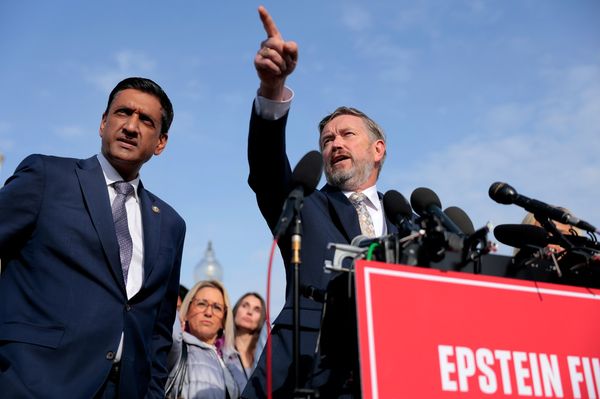
Think back to the last time you searched online for something practical—maybe a used car, a product review, or an explanation of new health coverage. The familiar list of blue links is fading away. In its place, a single, confident answer appears, assembled by AI from a mix of sources. It's faster and feels more direct, yet beneath that simplicity, competition for visibility is becoming more complex.
The way people access information is changing. Brands can't just buy their way to the top or rely on traditional SEO tactics. AI-first search engines now measure credibility differently, rewarding authority, relevance, and genuine validation from others. Creating endless content or spending more on marketing no longer guarantees exposure in this new "answer economy."
Declining Visibility and the Path Forward
This transformation has created both opportunity and confusion. In some cases, a single quote from an industry voice becomes the definitive answer. In others, authentic customer reviews outweigh established sources. Campaigns and pushing brand messaging only travels as far as others are willing to validate them.
Sheer volume of original content isn't enough. The brands that are thriving invest in public relations, original insights, and participation in communities where genuine commentary matters. They build trust among journalists, practitioners, and thought leaders. When those voices begin to reference them, AI-powered systems reward their visibility in turn.
Automation and Authority: Who Defines Credibility
As AI becomes the interpreter of reputation, a new tension has emerged. The authority a brand built over years is now filtered through automated selection. That reputation isn't disappearing, but it is being redefined. Algorithms interpret networks of trust, changing how influence is distributed.
A brand can't own an answer anymore, but it can contribute to the one that appears. While it may feel strange to see influence determined by invisible systems, this is how the AI information layer works. Authority now depends on independent confirmation. Attempts to dominate a topic with paid campaigns alone will no longer work. Put bluntly, every paid advertisement is completely invisible to AI-first search engines.
Major publishers have adapted by using their scale to secure a place in the answer chain. Through licensing and content agreements, their data feeds and archives are built directly into AI systems. Their reach gives them consistent presence and compensation. Users may see more choices, but much of the real control sits with those who already hold distribution power.
Measuring Influence in the Gray Zone
Understanding what drives visibility today is far more complicated than counting clicks or rankings. Metrics like keyword position and traffic no longer tell the full story. Modern teams are turning to tools such as Profound, Scrunch, Evertune, SEMrush, and SimilarWeb to track how and where they appear within AI-generated results, social conversations, or networked media.
These platforms measure volume, map citation patterns, analyze context, and trace the pathways that build credibility in real time. In these early days, blind spots remain. Attribution is difficult, dashboards lag behind shifts in trust, and the reasoning behind algorithmic outcomes is rarely clear.
Human feedback helps fill the gaps. It's important to ask customers and partners how they discovered your information and why they trusted it. Conduct searches across different platforms to understand how your presence changes. Integrate analytics and attribution into your content licensing and syndication agreements to ensure your contributions are recognized.
Winners, Losers, and the New Gatekeepers
Some players are naturally better positioned in this environment. Large publishers and data platforms benefit from years of credibility and formal partnerships that guarantee them recurring exposure and steady compensation. Their content often becomes the foundation of what AI systems cite.
Smaller brands, independent analysts, and creators face more challenges. Their expertise may inform AI summaries, but they're rarely credited. Simply showing up no longer means you'll be acknowledged.
Access, however, has never been easier. Meaningful inclusion still depends on timing, investment, and connection. Brands that lack strong relationships with analysts, active communities, or credible curators will find it hard to maintain visibility.
Credibility Without Certainty
Despite this consolidation of power, smaller players still have opportunities to stand out. AI often rewards well-supported, relevant insights, regardless of scale. The most visible answer isn't always from a major brand but from a practitioner with firsthand experience and trustworthy evidence.
Still, even strong credibility doesn't guarantee permanence. Insights can fade if they're not reinforced. The flood of aggregated content often dilutes distinct ideas, while algorithms lean toward consensus. Maintaining authority now means translating expertise into continuous engagement and visible proof of impact. An always-on content approach is a necessity.
Finding Leverage in a System You Don't Control
Thriving in this environment takes more than agility. Long-term influence comes from genuine reputation, credible relationships, and consistent participation in the spaces that shape perception. Monitor where your expertise appears and ensure your contributions are attributed.
Automation may put everyone on the same stage, but authority is what keeps you there. In the modern discovery landscape, speed is common but trust remains rare. The leaders who will endure are those who challenge assumptions, back their expertise with evidence, and adapt with intention.
Success now depends on maintaining visible credibility and earning recognition from the networks that determine who truly matters.
About Matthew Maher
Matthew Maher is a futurist and founder of M7 Innovations, a research and development firm focused on artificial intelligence, immersive media, and emerging technologies. He serves on the advisory boards of CHANEL and The Glimpse Group (NASDAQ: VRAR) and was named by Vogue as one of the Top 100 Innovators of 2024. Maher has delivered keynote presentations on innovation at CES, SXSW, and private client events around the world.







